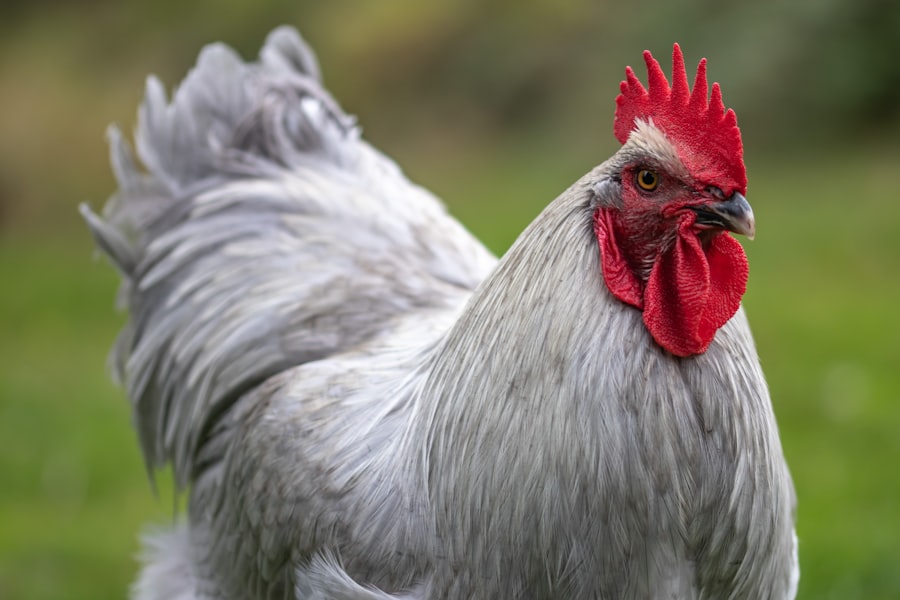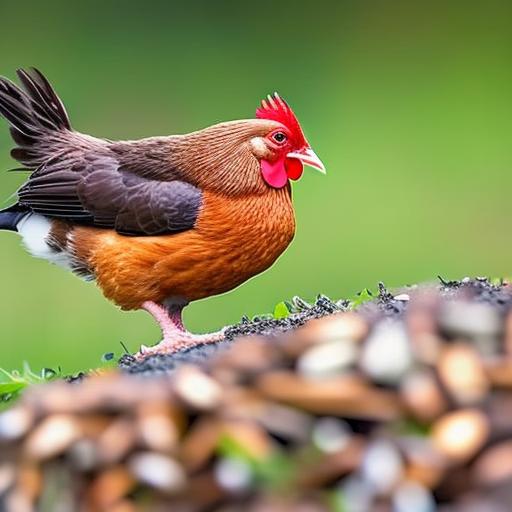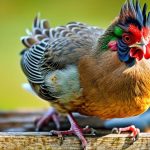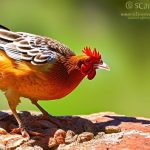When it comes to building a chicken coop, one of the most important decisions you’ll need to make is choosing the right surface for your chickens. The surface you choose will have a significant impact on the health and well-being of your chickens, as well as the ease of maintenance for you. There are several factors to consider before making this decision, including climate, drainage, and maintenance requirements. In this article, we will explore the different surface options available for chicken coops and discuss the benefits and drawbacks of each.
Key Takeaways
- Choosing the right surface for your chicken coop is important for the health and safety of your chickens.
- Factors to consider include climate, drainage, and ease of cleaning.
- Concrete surfaces are durable and easy to clean, but can be hard on chickens’ feet.
- Dirt surfaces are natural and provide good drainage, but can become muddy and difficult to clean.
- Sand surfaces are easy to clean and provide good drainage, but can be dusty and require frequent replacement.
Factors to Consider Before Choosing a Surface for Your Chicken Coop
Before deciding on a surface for your chicken coop, there are a few factors you should consider. First and foremost, you need to think about the climate in your area. If you live in an area with heavy rainfall or high humidity, you’ll want to choose a surface that provides good drainage to prevent standing water and mud. On the other hand, if you live in a dry climate, you may want to choose a surface that retains moisture to keep your chickens cool and comfortable.
Another important factor to consider is maintenance. Some surfaces require more regular maintenance than others. For example, a dirt surface will need to be regularly raked and fresh dirt added as needed. On the other hand, a concrete surface may require less maintenance but will still need regular cleaning and disinfecting.
Concrete Surface
A concrete surface is one of the most popular choices for chicken coops due to its durability and ease of cleaning. Concrete provides a solid foundation that is resistant to digging predators and can withstand heavy use. It also offers excellent drainage, which is essential for keeping your chickens dry and preventing the buildup of bacteria.
However, there are some drawbacks to using a concrete surface. Concrete can be hard on your chickens’ feet, so it’s important to provide adequate bedding such as straw or wood shavings to cushion their feet. Additionally, concrete can become slippery when wet, so it’s important to provide a non-slip surface for your chickens to walk on.
Dirt Surface
A dirt surface is another common choice for chicken coops, especially in areas with mild climates. Dirt provides a natural and comfortable surface for chickens to walk on and allows them to engage in natural behaviors such as dust bathing. It also provides good drainage if properly maintained.
However, there are some drawbacks to using a dirt surface. Dirt can become muddy and messy, especially in areas with heavy rainfall. It also requires regular maintenance, such as raking and adding fresh dirt as needed. Additionally, dirt can harbor parasites and bacteria, so it’s important to practice good hygiene and regularly clean and disinfect the coop.
Sand Surface
Sand is becoming an increasingly popular choice for chicken coop surfaces due to its excellent drainage and ease of cleaning. Sand provides a soft and comfortable surface for chickens to walk on and allows them to engage in natural behaviors such as scratching and dust bathing. It also dries quickly after rain or cleaning, preventing the buildup of bacteria.
However, there are some drawbacks to using a sand surface. Sand can be expensive to purchase and may require regular replenishment if it becomes compacted or contaminated. It also requires regular maintenance, such as raking and sifting out waste. Additionally, sand can be abrasive on chickens’ feet, so it’s important to provide adequate bedding to cushion their feet.
Gravel Surface

Gravel is another option for chicken coop surfaces that provides excellent drainage and durability. Gravel allows water to quickly drain away, preventing the buildup of mud and bacteria. It also provides a solid surface that is resistant to digging predators.
However, there are some drawbacks to using a gravel surface. Gravel can be uncomfortable for chickens to walk on, so it’s important to provide adequate bedding such as straw or wood shavings. It can also be difficult to clean, as waste can become trapped between the gravel stones. Additionally, gravel can be expensive to purchase and may require regular replenishment if it becomes compacted or contaminated.
Grass Surface
A grass surface is a natural and aesthetically pleasing option for chicken coops. Grass provides a soft and comfortable surface for chickens to walk on and allows them to engage in natural behaviors such as grazing. It also provides good drainage if properly maintained.
However, there are some drawbacks to using a grass surface. Grass requires regular maintenance, such as mowing and fertilizing, to ensure it stays healthy and doesn’t become overgrazed by the chickens. It can also become muddy and messy in areas with heavy rainfall. Additionally, grass can harbor parasites and bacteria, so it’s important to practice good hygiene and regularly clean and disinfect the coop.
Wood Chips Surface
Wood chips are another option for chicken coop surfaces that provide good drainage and comfort for chickens. Wood chips absorb moisture well and provide a soft surface for chickens to walk on. They also help control odors and can be easily replaced when they become soiled.
However, there are some drawbacks to using a wood chips surface. Wood chips can be expensive to purchase and may require regular replenishment if they become compacted or contaminated. They can also harbor parasites and bacteria, so it’s important to practice good hygiene and regularly clean and disinfect the coop.
Combination Surface
A combination of surfaces is another option for chicken coop surfaces that allows you to take advantage of the benefits of different materials. For example, you could use concrete or gravel in the main area of the coop for easy cleaning and durability, while using sand or wood chips in the nesting boxes for comfort and moisture absorption.
However, there are some drawbacks to using a combination of surfaces. It can be more challenging to maintain and clean a coop with multiple surfaces, as they may require different maintenance routines. It’s also important to ensure that the different surfaces are compatible with each other and provide adequate drainage.
Choosing the Best Surface for Your Chicken Coop
In conclusion, choosing the right surface for your chicken coop is an important decision that will have a significant impact on the health and well-being of your chickens. Each surface option has its own benefits and drawbacks, so it’s important to consider your specific needs and circumstances before making a decision.
Concrete provides durability and easy cleaning but requires adequate bedding for comfort. Dirt provides a natural surface but requires regular maintenance and can become muddy. Sand provides excellent drainage but requires regular maintenance and can be abrasive on chickens’ feet. Gravel provides good drainage and durability but can be uncomfortable for chickens to walk on. Grass provides a natural surface but requires regular maintenance and can become muddy. Wood chips provide good drainage and comfort but can be expensive and require regular replenishment.
Ultimately, the best surface for your chicken coop will depend on your specific needs and circumstances. By considering factors such as climate, drainage, and maintenance requirements, you can make an informed decision that will provide a clean and comfortable surface for your chickens to thrive.
If you’re considering keeping chickens, one of the most important decisions you’ll need to make is where to put their coop. The location of the coop can greatly impact the health and well-being of your chickens. To help you make an informed decision, check out this informative article on the best surface to keep chickens on. It provides valuable insights and tips on choosing the right surface for your chicken coop, ensuring a comfortable and safe environment for your feathered friends. For more information, click here: https://poultrywizard.com/keeping-chickens/where-to-put-chicken-coop/.
FAQs
What is the best surface to keep chickens on?
The best surface to keep chickens on is a combination of grass and soil. Chickens need access to grass for grazing and soil for dust bathing.
Why is grass important for chickens?
Grass is important for chickens because it provides them with a natural source of food and allows them to engage in natural behaviors like scratching and pecking.
Why is soil important for chickens?
Soil is important for chickens because it allows them to engage in natural behaviors like dust bathing, which helps keep their feathers clean and free of parasites.
Can chickens be kept on concrete or asphalt?
While chickens can technically be kept on concrete or asphalt, it is not recommended as it does not allow them to engage in natural behaviors like scratching and dust bathing.
What are the disadvantages of keeping chickens on a hard surface?
Keeping chickens on a hard surface like concrete or asphalt can lead to health problems like foot injuries and respiratory issues. It also does not allow them to engage in natural behaviors, which can lead to boredom and stress.
What are the advantages of keeping chickens on a grassy surface?
Keeping chickens on a grassy surface allows them to engage in natural behaviors like grazing, scratching, and dust bathing. It also provides them with a natural source of food and helps keep their feathers clean and free of parasites.
What are the disadvantages of keeping chickens on a grassy surface?
Keeping chickens on a grassy surface can lead to health problems like parasites and disease if the area is not properly maintained. It can also be more difficult to keep the area clean and free of waste.
Meet Walter, the feathered-friend fanatic of Florida! Nestled in the sunshine state, Walter struts through life with his feathered companions, clucking his way to happiness. With a coop that’s fancier than a five-star hotel, he’s the Don Juan of the chicken world. When he’s not teaching his hens to do the cha-cha, you’ll find him in a heated debate with his prized rooster, Sir Clucks-a-Lot. Walter’s poultry passion is no yolk; he’s the sunny-side-up guy you never knew you needed in your flock of friends!







